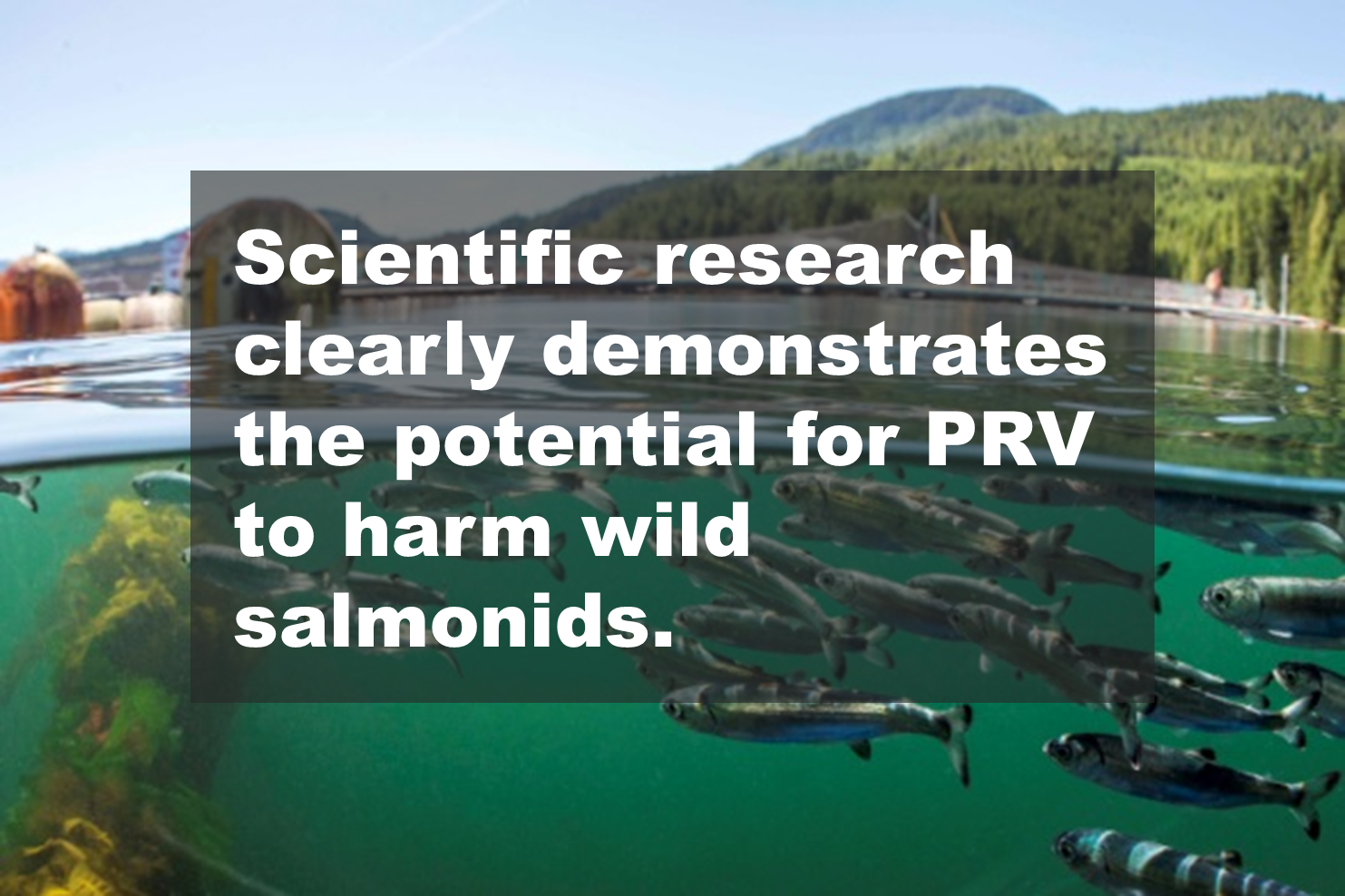An estimated 1.1 to 1.6 million fish are being grown in Puget Sound’s remaining Atlantic salmon net pens.
It’s likely that the vast majority of those fish are infected with Piscine Reovirus (PRV), a highly contagious virus that can infect and harm wild fish.
Following the Cypress Island net pen collapse in August 2017, Washington Department of Fish and Wildlife and Wild Fish Conservancy independently collected and submitted samples from escaped Atlantic salmon for viral testing. In spring of 2018, both WDFW and WFC reported that 100% of the sampled farmed fish (27 in total) tested positive for PRV, a highly contagious and debilitating salmonid disease. 1
These tests mark the first time farmed Atlantic salmon have been sampled and tested for PRV in Puget Sound.
Genetic sequencing of the S1 segment of a subset of the tissue samples submitted for testing by Wild Fish Conservancy determined the virus to be sub-genotype Ia, or of Norwegian origin. Specifically, the virus clustered tightly with a PRV isolate from Iceland. Original samples submitted by WDFW were not sequenced.
On May 17, 2018, WDFW announced they had denied Cooke Aquaculture’s request to transfer 800,000 Atlantic salmon smolts from the Rochester, WA hatchery into a vacant net pen in Rich Passage after fish tested positive for “an Icelandic form” of PRV. 2 The agency also reported this form of PRV is the same or similar to the virus which occurs in the Icelandic hatchery from which Cooke Aquaculture’s Atlantic salmon eggs originate.
There is a high likelihood PRV will transmit from farmed to wild salmon.
- PRV survives well in sea water, and is known to spread out long distances from farms. 3
- The spread of PRV from farmed Atlantic salmon to sockeye salmon has been documented. 4
- A 2017 BC study demonstrated that significantly more wild salmon were infected with PRV if they had been exposed to salmon farms than if they were located far away. 5
PRV is the cause of HSMI, a lethal salmonid disease.
HSMI causes a crippling onset of symptoms in salmonids, symptoms that would either kill or render a wild fish incapable of surviving in natural conditions.
In a 2017 Norwegian study, a pure strain of PRV was injected directly into an Atlantic salmon who subsequently tested positive for HSMI. 6
Even in the absence of HSMI, PRV can cause debilitating or lethal impacts in wild salmon.
- A 2018 BC study found that in farmed Chinook salmon, increased virus loads in red blood cells caused cells rupture resulting in anemia and potentially lethal kidney and liver disease. 7
- As PRV builds up in a salmon’s red blood cells, the virus may reduce the amount of oxygen cells can transport to the fish’s muscles, lowering the fish’s performance. 8
- PRV infection may impair the capacity of wild salmon to complete a challenging spawning migration. 5, 9
- Reduced performance for wild fish means a reduced ability to capture prey, evade predators, and swim upriver to spawn.
Our sound, our salmon
prv publications
Want physical copies of these documents? Contact Our Sound, Our Salmon to request physical copies of these publications or download the PDF version above.
References
Want to dive deeper into the science on PRV? Click on any of the citations below to read each article.
Science Spotlight!
CTV National News interviews co-author Dr. Kristi M. Miller, Head of the Department of Fisheries and Oceans Canada (DFO), on the groundbreaking 2018 study Di Ciccio et al. that found PRV may be lethal for Chinook salmon.



